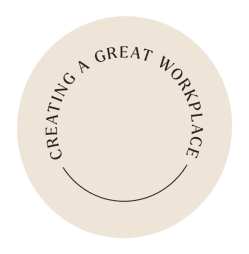An Interview with Lars Minns
I recently had the privilege of speaking with Lars Minns, the Chief Human Resources Officer of North America for Mercedes-Benz, about effectively retaining top talent and motivating employees within an organization. Read on to learn about how Mercedes-Benz is approaching retention strategies, implementing turnover intervention, and arming their employees for long-term success.
Q. A critical issue that many organizations face is how to retain the employees they want to keep. What employee retention strategies have you found to be effective?
A. I believe there are four main overall best practices regarding retention strategies that, if done consistently, are critical.
- Very quickly identify your employees that add the most value. That doesn’t mean to overlook the employees who aren’t adding as much value, but take note and identify who the superstars are early on.
- Once you’ve identified them, let them know. We try our best to ensure those individuals are not only told their value but are also welcomed into very big initiatives early on. This signifies that they are needed within the organization.
- Use them to help motivate and lead other employees. Not always, but often these key individuals naturally create cultural goodness and richness in an organization. The earlier you can find these people, the earlier you can use them in your organization to help spread these positive elements.
- Talk often and openly about the retention strategies. Once you create a quality retention strategy, you must openly communicate it to your team. It’s vital to share these strategies very early on, or they could go under-utilized, and you could lose key employees to the competition.
Q. Many organizations now have a formal Employee Journey; what adjustments might we need to make to that journey when we acknowledge the reality that many of our employees may only be with us for two to five years?
A. A crucial part in us finding success with our Employee Journey has been by identifying the eight critical moments that matter to our employees; almost like a customer segmentation in regards to the buying process. What are the eight key moments that are so significant and in which the customer is very clearly engaged? We thought about this in terms of our employees and identified the eight critical moments that matter most. Those key moments are where we make sure we place our emphasis.
Something else we realized is that the onboarding process is not a static event, and therefore our onboarding approach should not be static. Typically, onboarding guides tend to get written once and updated maybe a year or two later because it’s so labor-intensive, but we have a living, breathing document, and we update it every thirty days to add additional information. This allows us to evolve quickly.
But I think that the crux of all of this is to ensure that your employees have a unique opportunity to move through the employee journey as quickly as possible, provided they’ve mastered the skills of the current position. For too long as a company, we found it fashionable to keep someone in their role for too long instead of encouraging them to move up. We should be motivating our employees to reach for different positions as they master their current one.
Q. When a company is experiencing heavy turnover, how can they effectively intervene?
A. The most important thing is helping our managers understand the early signs that someone may not be engaged. Low engagement to me is a step before the actual exit. The exit is the outcome, but I think if you are looking for leading indicators, the level of engagement is most important.
An example of a key indicator that I always look for is missed deadlines. Anecdotally, I’ve found that when employees start to miss deadlines, it might mean that there may not be a level of enthusiasm for the work that they’re doing. That doesn’t mean you lose them; it just gives you a starting indicator of low engagement. So, instead of looking for static numbers, like the turnover rate, we try to look for leading indicators.
Now, of course, employee survey results or engagement survey results are helpful tools, but even those are static numbers. We look for natural behaviors that happen, that may indicate when engagement is low, which of course, can be a prelude to an exit.
Q. It’s just as important to understand why valuable employees stay as it is to know what drives them to leave. What are some of the themes you’re seeing with employees and their organizations that are enjoying longer tenure?
A. The most important thing to know is that employees join organizations because they want to build worth, and they stay because they know their worth. In other words, people want to feel their value, and so I believe you have to put them in a position where they can feel valued. Ultimately, everyone wants to walk home at the end of the day and say, “I felt my worth today.” There’s a negative connotation to that because it sounds like it’s all self-serving by way of the employee, but I think it’s more about who we are. We want to see that there is worth in what we do. This is why you have people who have some of the lowest responsibilities but do it with the greatest enthusiasm. They want to build worth.
I think you can help your employees feel this by challenging them. There are times we make decisions based on skills and capabilities, but you’ve got to take a chance and give them something big to run with and learn from. I think throwing an employee in as much as possible and seeing what they can do is much healthier than trying to be too intentional in your identification of what would be a challenge.
I would not be in this position if someone didn’t say, “just go do it.” My leaders at Mercedes-Benz appealed to my worth, my desire to go do it, and it worked.
Q. What is your advice to organizations to help fight boredom and keep their employees engaged and motivated?
A. I won’t give specific advice necessarily, but I’ll use my own experience to explain things we have implemented.
HR has always been very traditional. We are known as a support function and, at times, a transactional relationship. There can be a full-on shouldering of the overall burdens of the organization, and I wanted to change that. So, I, along with my leadership team, brainstormed ways in which we could continue to progress the HR function in the company and keep it from becoming dull. That’s when I found Agile.
The Agile practices are mostly software-related, but I was amazed to find an entire HR methodology on it. So, I became certified in Agile, requested that my leadership team also get certified, and have even dedicated an entire HR Agile Team to introduce and spread the Agile methodologies within our organization.
One of the Agile methods we’re employing that has helped employees stay motivated and on track is the “MoSCoW Method.” Must do. Should do. Could do. Won’t do. It’s helped people prioritize their priorities, view their work through a different lens, and effectively give people the tools they need to take on big projects.
Lastly, I’m very motivated to automate many things that we do. I think we spend an awful lot of money investing in our employees, yet we ask them to do some of the most administrative tasks. We have to automate processes and make sure we are keeping up with the ever-changing way of working.
——————————-
About Lars Minns:
Lars N. Minns is the Chief Human Resources Officer of North America for Mercedes-Benz, with responsibility for the USA, Canada, and Mexico. He leads the organization in designing and implementing HR strategies that directly align with the company’s strategic objectives related to the marketing, sales, distribution, and customer service for all Mercedes-Benz products in the region. Lars is a sought after presenter and facilitator and spends considerable time communicating the importance of cultivating the right talent for business success.
———————————
I found Lars’ words to be insightful and I’m looking forward to hearing more from him when he joins us at The Fellowship later this year! I hope you utilize Lars’ answers to gain a new perspective on managing your organization’s talent. Together, we truly can build Unstoppable Cultures!
Ginger
P.S. If you’re interested in learning more about The Fellowship, click here. I’d love to see you there!





